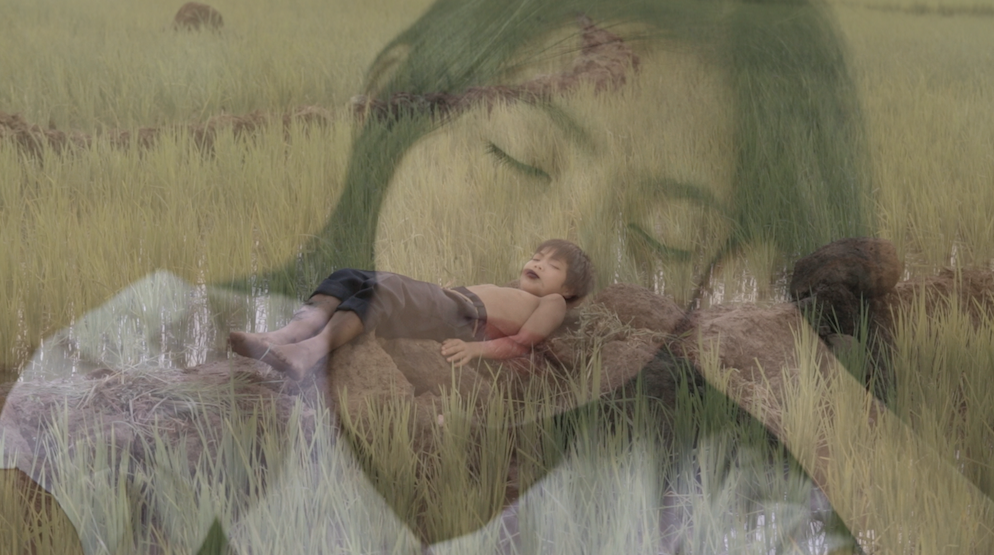Untitled (Heads)
2013 - Installation (Installation)
Dimensions variable
Phan Thao Nguyên
On September 22, 1940 the French signed an accord, which granted Japanese troops the right to occupy Indochina. The Japanese presence in Indochina lasted until the end of World War II and during the occupation, jute supplies from India were interrupted. Jute was used to make sacks as well as gunpowder, a crucial material for the war industry. Looking for new jute supplies, the Japanese authorities forced Vietnamese farmers to uproot rice and grow jute. This was one of the main reasons for the horrific famine in North Vietnam in 1945, resulting in the death of 2 million people. The installation Untitled (Heads) by Phan Thao Nguyên is made from locally grown jute plant. For this project, the artist dried the jute stalks, cut them into smaller modules and then manually combined them into a structure. The structure is similar to the shape of a chandelier, but is actually inspired by the Ma Mot tree, a ritualistic tree constructed by Thai minorities in Northern Vietnam for religious purposes. Totems made from animal bones and amulets are hung on the Ma Mot tree, each object representing a dead or evil spirit. The purpose of this action is to cure illness. The artist hung portraits of farmers whom she interviewed during the course of her research from the branches in an attempt to create a ritual yet individualized space of healing from painful histories. Through this artwork, the jute plant, a body that is both the cause and witness of a tragic event, is infused with poetic meaning.
Phan Thao Nguyên is a multimedia artist who uses painting, installation, video, and performance to depict historical events, narrative traditions, and minor gestures that challenge received ideas and social conventions. Nguyên’s work combines references to history, literature, philosophy, and open poetic spaces conducive to reflection. Through literature, philosophy, and daily life, she observes ambiguous issues in social convention, history, and tradition. The artist is expanding her “theatrical fields”, including what she calls performance gesture and moving images. Nguyên is also a member of the collective Art Labor, which explores cross-disciplinary practices and develops art projects that will benefit the local community.

